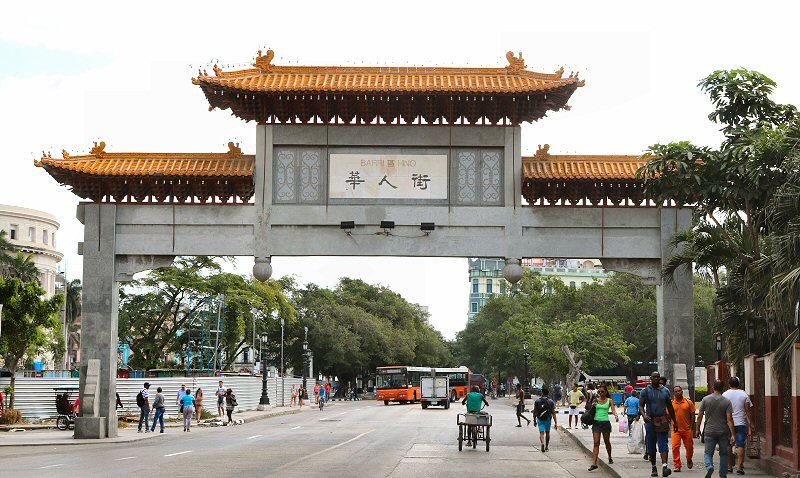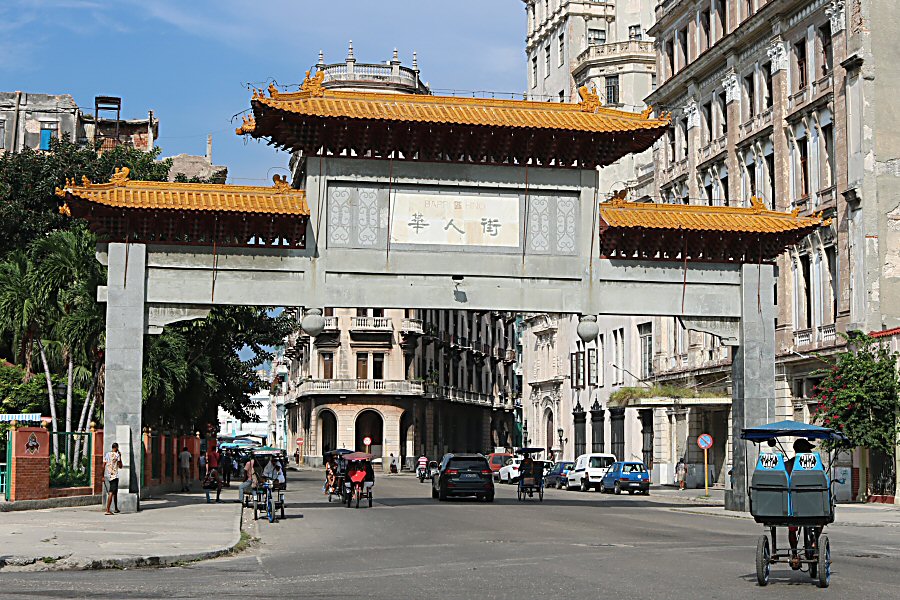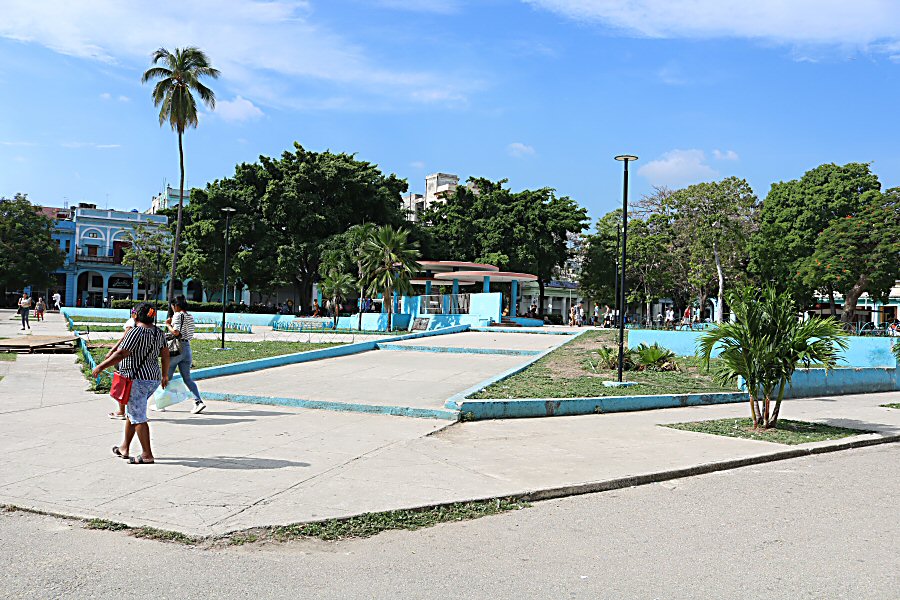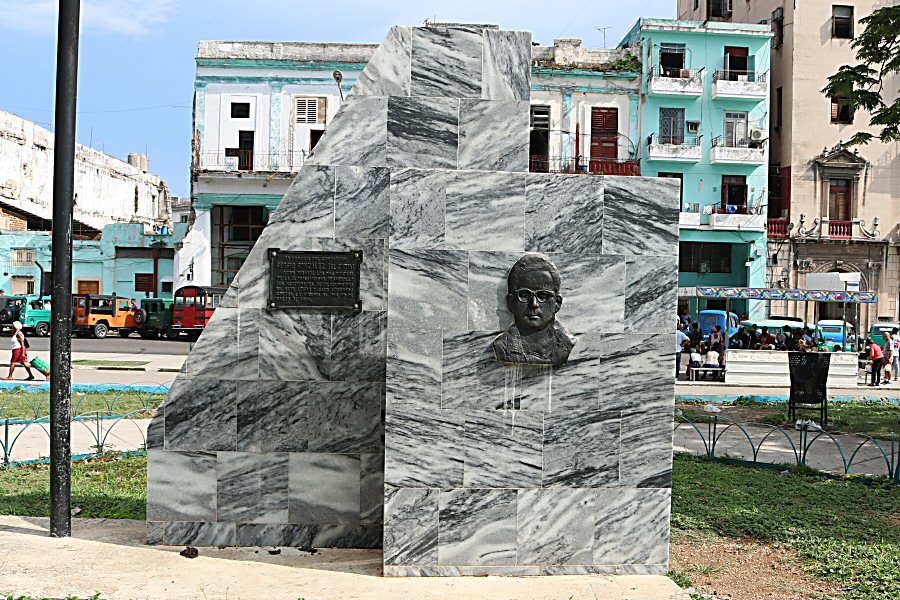
Havana’s Chinatown is located in
an area, roughly bordered by the
by the Simón Bolívar, San Martin, Galiano and the Padre
Varela streets.


El Barrio Chino de la Habana,
Havana’s Chinatown, is the oldest Chinatown in the Caribbean. It
spans over approximately 45 blocks, consisting of living
quarters, restaurants, shops and Chinese associations just south
of the Capitolio. A rectangular concrete arch with a
pagoda-inspired roof on the intersection of the Amistad and the
Dragones streets marks the entrance of the neighborhood. Its
upper arches and the structure of its roof are made of enameled
gold-colored ceramics. The portico has not any historical value,
as it was constructed in 1999. It was financed by the People's
Republic of China and all the materials were brought from China.
Although, the Chinatown of Havana was
the largest one in the Caribbean for a long period, it is not so
anymore. Once you cross this portico, you expect to see a
Chinese crowd and numerous Chinese shops, but the absence of the
Chinese people should be not a surprise for you as they were
long since dissolved into the racial melting pot. Even so, the
inhabitants of the Chinatown that were the descendants of
Chinese still preserve many customs, buildings, societies and
institutions, inherited from this culture that settled in Cuba.
The quarter is made up of five small streets, the Dragones and the Cuchillo streets being the most important ones. You will find many shops, beauty parlors, small groceries, restaurants that serve both traditional Chinese food and comida criolla, Cuban creole cuisine, inns and little backstreet food markets, composed mostly of simple fruit and vegetable stalls. There is also a Chinese cinema showing movies in original versions, as well as a Chinese traditional pharmacy.
The period between 1850 and 1860 witnessed the social and economic reform demands of farmers and business owners from the Spanish Crown. The slave trade had been banned, but due to the lack of supervision, the slave trade to Cuba peaked in the period from 1850 to 1860. Only in the 4-year period between 1856 and 1860, the number of slaves brought to the island illegally was 90.000. While the slave entry to the island increased continuously, the increase in costs especially in the agricultural areas on the east of the island, and the introduction of new techniques and methods that operate sugar cane with fewer people, eliminated the need for slaves and even created a strong demand for the prohibition of slave trade on the island to stop the increasing African population. to read more >>>


